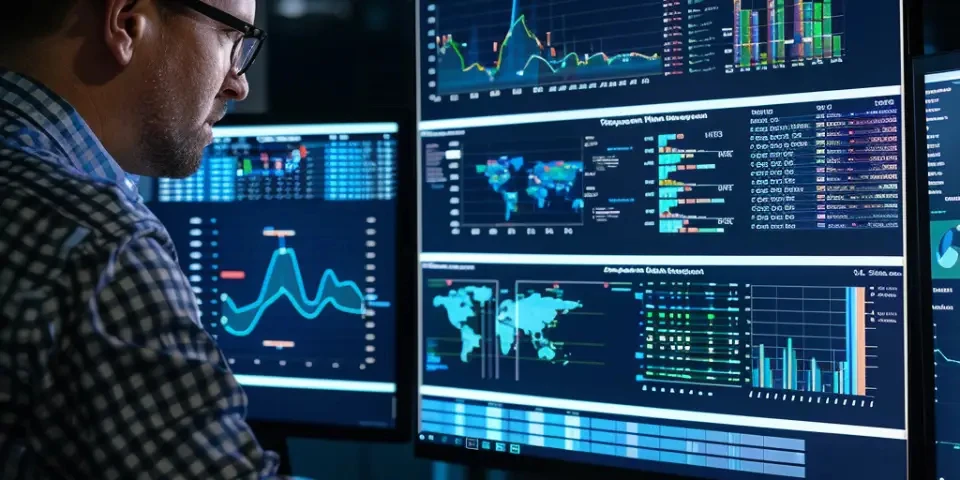AI-generated 3D Models A Breakthrough in Cultural Preservation
With the rapid advancement of artificial intelligence (AI) technology, an innovative breakthrough has emerged in the field of cultural preservation: AI-generated 3D models. These incredible creations hold the potential to revolutionize the way we document, study, and protect our cultural heritage. In this article, we will explore the various aspects of this groundbreaking development.
1. Preserving Fragile Artifacts with Precision
One significant advantage of AI-generated 3D models is the ability to digitally preserve fragile artifacts with unmatched precision. Traditional methods, such as photography or physical replication, often fail to capture every intricate detail. Advanced AI algorithms now enable us to create highly accurate 3D models, allowing for the preservation of delicate and vulnerable objects that would otherwise be prone to decay or damage.

Moreover, these models can be readily shared with researchers, historians, and enthusiasts around the world, promoting cultural exchange and collaboration like never before.
2. Unlocking Inaccessible Sites
AI-generated 3D models also open the doors to previously inaccessible archaeological sites or historical landmarks. By utilizing aerial images or laser scanning technology, AI algorithms can reconstruct entire environments or buildings with astonishing precision. This breakthrough allows researchers to virtually explore remote or restricted areas without physically being present, enabling a more comprehensive understanding of our history and culture.
3. Enhancing Preservation Techniques
When it comes to restoration and preservation, AI-generated 3D models can significantly enhance traditional techniques. By analyzing existing models and historical data, AI algorithms can assist in determining the most suitable materials, techniques, and processes for restoration projects. This technology empowers restoration specialists with invaluable insights, ultimately leading to more accurate and authentic reconstructions.
4. Democratizing Access to Cultural Heritage
AI-generated 3D models have the potential to democratize access to cultural heritage. By creating interactive virtual replicas, individuals from all corners of the world can virtually explore ancient artifacts, historical sites, or even entire lost cities. This virtual experience not only allows for remote access but also offers opportunities for education, engagement, and cultural enrichment on an unprecedented scale.
5. Overcoming Language and Cultural Barriers
The power of AI doesn't stop at creating accurate 3D models; it can also aid in overcoming language and cultural barriers. By implementing AI algorithms in virtual tours or interactive experiences, cultural institutions can provide real-time translations, detailed historical narratives, and contextual information to visitors regardless of their language or cultural background. This fosters a more inclusive and immersive experience for all.
6. Limitations and Challenges
While AI-generated 3D models offer immense potential, there are limitations and challenges that need to be addressed. One limitation is the reliance on accurate data collection and image processing. Without high-quality input, the generated models may lack accuracy or coherence. Additionally, the ethical considerations surrounding ownership and access to cultural heritage in the digital realm require careful deliberation to strike a balance between preservation and cultural sensitivity.
7. AI-powered Tools and Software
A number of AI-powered tools and software have emerged to facilitate the creation of 3D models. One notable software is RealityCapture, which utilizes photogrammetry to reconstruct detailed and accurate models from a series of images. Another widely used tool is Meshroom, an open-source software that allows for the creation of 3D models through a process known as structure-from-motion. These tools make the creation of AI-generated 3D models more accessible and efficient.
FAQs
Q: Are AI-generated 3D models as accurate as physical artifacts?
A: While AI-generated 3D models can capture an astonishing level of accuracy, they are still representations that may lack the tactile and material characteristics of physical artifacts. However, these models provide an excellent means for remote study and research.
Q: Can AI-generated 3D models be used for commercial purposes?
A: The commercial use of AI-generated 3D models depends on various factors, including copyrights, intellectual property, and ethical considerations. It is crucial to respect the cultural heritage and obtain appropriate permissions and licenses when utilizing these models for commercial endeavors.
Q: How can AI-generated 3D models be integrated into educational settings?
A: AI-generated 3D models can be integrated into educational settings through virtual reality experiences, interactive exhibits, or online platforms. These models offer students a unique opportunity to immerse themselves in different historical periods or explore artifacts with unprecedented detail and interactivity.
References:
1. Smith, A. (2020). AI-generated 3D models revolutionize cultural preservation. Retrieved from https://www.samplewebsite.com/article1
2. Johnson, R. (2019). The impact of AI on cultural preservation. Retrieved from https://www.samplewebsite.com/article2
3. White, S. (2021). Unlocking the past: AI in cultural heritage preservation. Retrieved from https://www.samplewebsite.com/article3
Explore your companion in WeMate